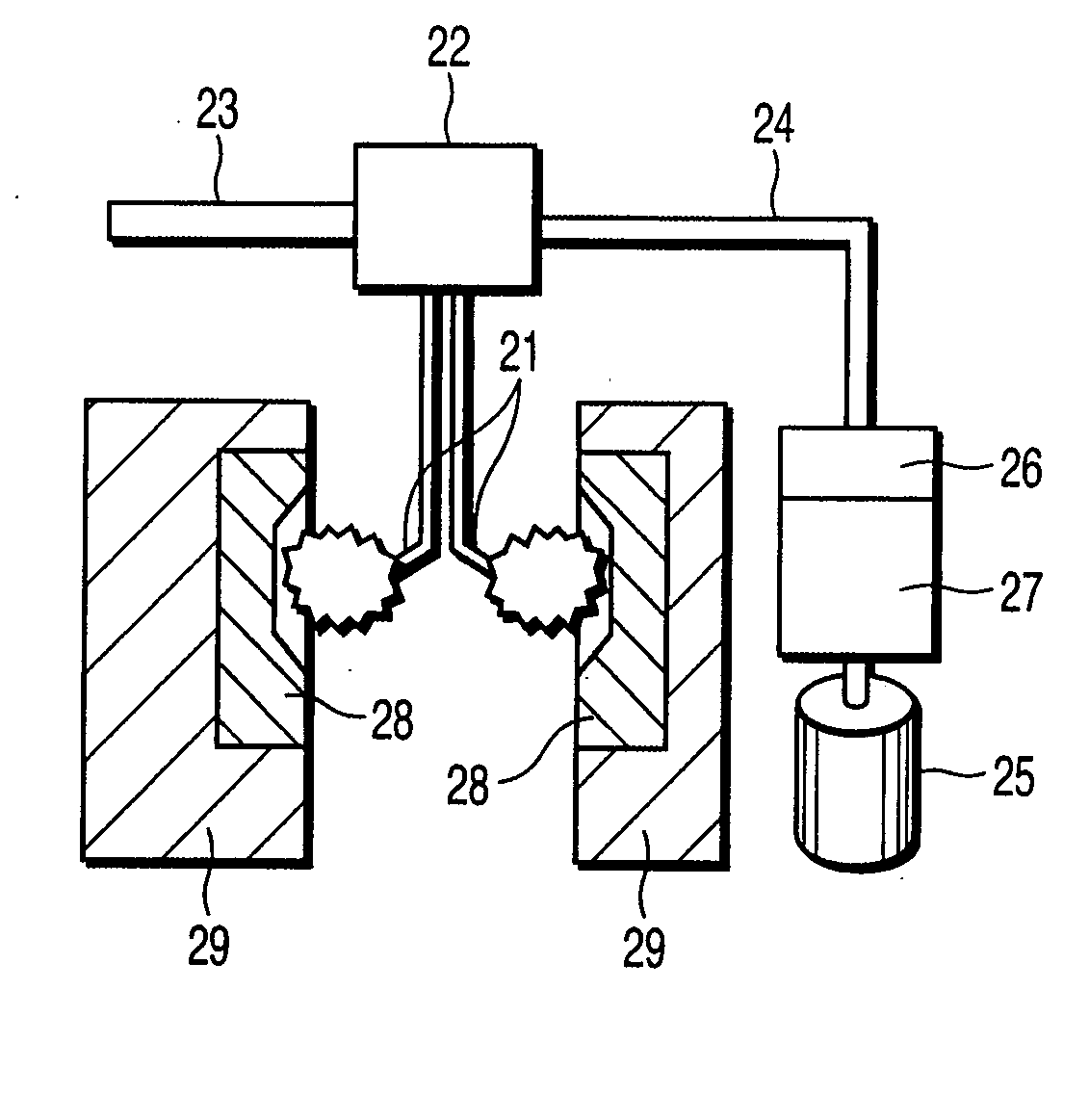Oil type release agent for die casting method for getting solvent mixing ratio, casting method, and spray unit
a technology of oil-type release agent and die casting, which is applied in the direction of manufacturing tools, foundry patterns, moulding apparatus, etc., can solve the problems of difficult die casting automation, low production efficiency, and poor work environment, and achieve excellent lubricating property and less vapor scatting in the air
- Summary
- Abstract
- Description
- Claims
- Application Information
AI Technical Summary
Benefits of technology
Problems solved by technology
Method used
Image
Examples
examples 1 to 5
(I) EXAMPLES 1 TO 5 AND COMPARATIVE EXAMPLES 1 TO 3
[0096] (A) Components and results of measurement tests
[0097] The following Table 1 shows the components of Examples 1, 2, 3, 4, and 5, physical values, results of the adhesion test, and results of a friction test. Also, the following Table 1 shows Comparative Examples 1 to 3 the components of water soluble type release agents produced by the applicant of the invention: that is, a water-soluble pigment release agent (trade name: Lubrolene A-704), a water soluble type release agent (trade name: Lubrolene A-201), and a water soluble type release agent (trade name: Lubrolene A-1609), physical values, results of the adhesion test, and results of the friction test. [0098] (B) Production method
[0099] After mixing a high viscosity mineral oil, a silicone oil, a rapeseed oil and an organic molybdenum at ratios shown on the basis of % by weight in Table 1, the mixture was heated to 40° C. and stirred for 10 minutes. The mixture was further ...
examples 6 to 11
(II) EXAMPLES 6 TO 11 AND COMPARATIVE EXAMPLES 4 TO 7
[0130] Hereinafter, release agents of Examples 6 to 11 containing a wettability improving additive will be described with reference to release agents of Comparative Examples 4 to 7. [0131] (A) Components and test results
[0132] The following Table 4 shows components physical values, results of adhesion test, and results of friction force test of the oil type release agents of Examples 6, 7, 8, 9, 10, and 11. The following Table 5 shows physical values, components, results of adhesion test, and results of friction test for the oil type release agents of Comparative Examples 4, 5, and 6 and the water soluble type release agent (trade name: Lubrolene A-1609, manufactured by AOKI SCIENCE INSTITUTE Co., Ltd.) of Comparative Example 7.
TABLE 4Examples67891011Components(% by weight)Water000000Solvent95.268895.26—88.886Low viscosity———88——mineral oilHigh viscosity1.751.7555mineral oilSilicone oil1.751.7555Rapeseed oil0.170.50.170.50.50.5...
example 12
[0147] Next, the spray unit for evenly applying the oil type release agents of the invention will be described. The unit is as explained above. The casting qualities were compared in Example 12 by using an actual machine.
[0148] The following Table 7 shows the properties of products obtained by aluminum die casting using the release agents of Examples 13 to 16 and Comparative Examples 8 and 9 and the above-mentioned spray unit. In this case, the release agent of Example 4 was used for Examples 13 and 14; the release agent of Example 6 was used for Examples 15 and 16; the release agent of Comparative Example 7 was used for Comparative Example 8; and the release agent of Comparative Example 4 was used for Comparative Example 9. As shown in FIG. 1, the die employed in Example 12 was able to make two products at the same time and had a casting structure composed of upper and lower slides in a cavity part which was formed with movable and fixed dies.
[0149] The spray of the oil type rele...
PUM
| Property | Measurement | Unit |
|---|---|---|
| temperature | aaaaa | aaaaa |
| flash point | aaaaa | aaaaa |
| flash point | aaaaa | aaaaa |
Abstract
Description
Claims
Application Information
 Login to View More
Login to View More - R&D
- Intellectual Property
- Life Sciences
- Materials
- Tech Scout
- Unparalleled Data Quality
- Higher Quality Content
- 60% Fewer Hallucinations
Browse by: Latest US Patents, China's latest patents, Technical Efficacy Thesaurus, Application Domain, Technology Topic, Popular Technical Reports.
© 2025 PatSnap. All rights reserved.Legal|Privacy policy|Modern Slavery Act Transparency Statement|Sitemap|About US| Contact US: help@patsnap.com



